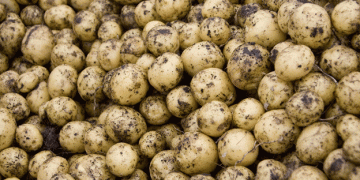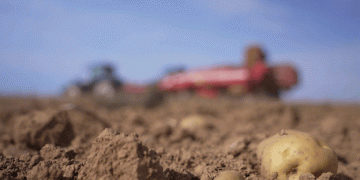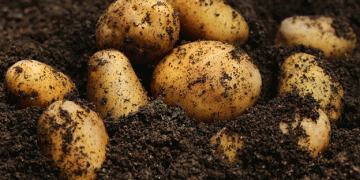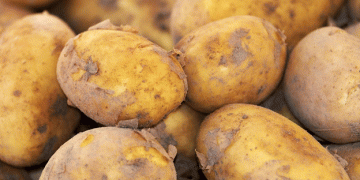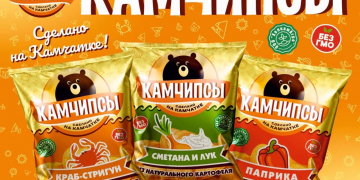Daraa Farmers Switch to Less Expensive Crops Due to Falling Prices and Rising Production Costs
The agricultural sector in the Syrian province of Daraa is in crisis: local farmers have significantly reduced the area under potato cultivation in the spring season, replacing it with more economically viable crops such as legumes and wheat. The reasons for this decision were the fall in market prices, high production costs, difficulties in importing quality seed material and unfavorable weather conditions.
Reduction in Planting Area
Faced with financial risks, Daraa farmers have sharply reduced the area under potato cultivation. For example, Hassan al-Eid, a farmer from the city of Inkhil, allocated only 40 dunams (4 hectares) for potatoes this season, compared to 700 dunams (70 hectares) last season. He noted that potato cultivation requires significant capital investment, and the uncertainty of government policy regarding support for farmers increases the risk of losses.
Other farmers are also cutting back on production. For example, Ahmed al-Harir from the city of Mleihat al-Atash decided to completely abandon planting potatoes in the spring season, focusing on grain crops. He hoped to sell the autumn harvest at a higher price during Ramadan, but low prices forced him to reconsider his strategy.
Factors affecting the reduction in planting areas
Weak purchasing power
Due to the economic crisis and low purchasing power of the population, domestic demand for potatoes remains low. At the same time, the Persian Gulf countries have not imported significant volumes of Syrian potatoes this season, which has also affected prices.
Problems with seeds
Previously, farmers purchased seeds through the State Institute for Seed Multiplication at subsidized prices. However, this year, the price of seeds on the free market was lower than the state price, which led many farmers to cancel their previously placed orders.
Some farmers, like Hassan al-Eid, even preferred to lose their advance payments rather than buy seeds at inflated prices. Currently, local seeds dominate the market, costing no more than 400 USD per ton, but their yield is lower compared to imported varieties.
Climate factors and delayed precipitation
Additional difficulties were created by the lack of rain at the beginning of the season. Many farmers were forced to postpone planting in the hope of precipitation or use expensive artificial irrigation. For example, farmer Majd al-Mubasbis was forced to irrigate his fields from a well due to the lack of rain, which led to additional fuel costs.
Possible consequences
If the economic situation and climate conditions do not change, the reduction in potato production in Daraa could lead to a shortage on the domestic market next season, which would trigger price increases. In addition, the reduction in potato areas could negatively affect Syria’s export opportunities if demand for the product recovers in the future.
Do you think there are prospects for stabilizing the potato market in Syria in the coming years, or will the trend of production reduction continue? What measures could help farmers overcome the crisis?


